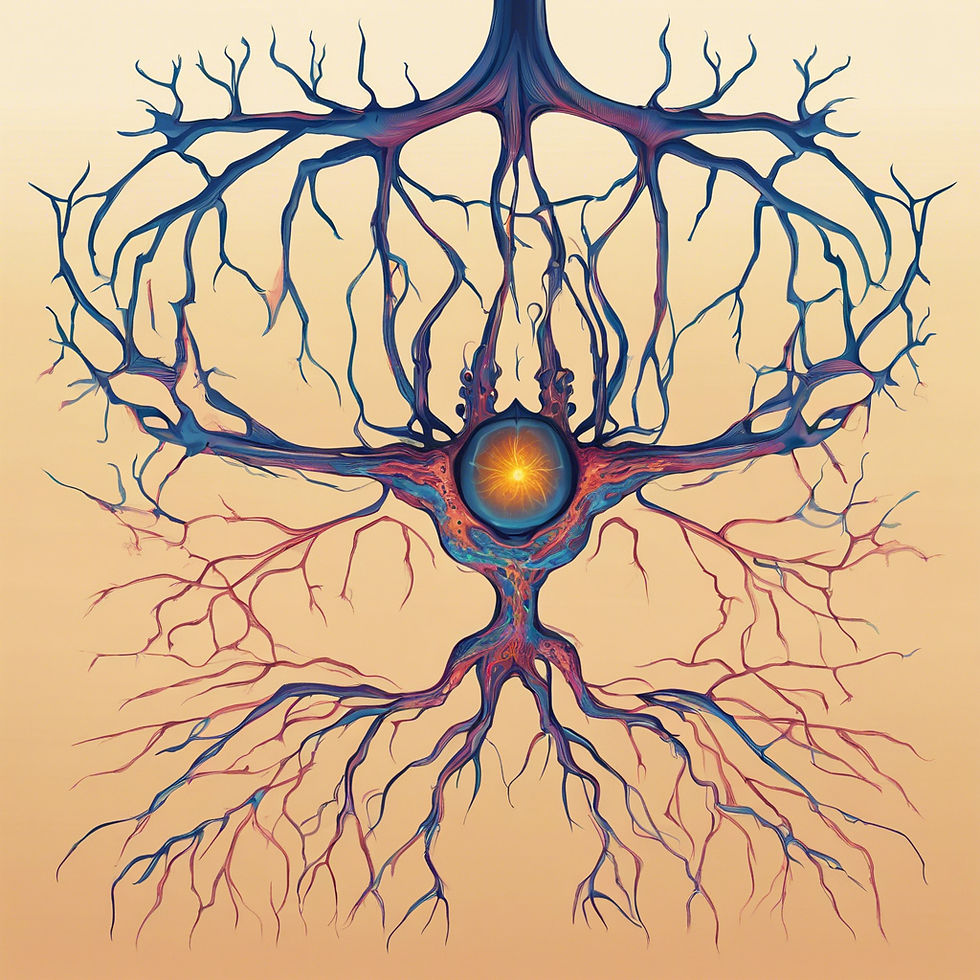Can Neuroplasticity Help Change Behavior and Habits?
- rajnishant0311
- Sep 7, 2024
- 3 min read
-Nishant Raj
Neuroplasticity is the brain's ability to change and adapt in response to stimuli over time. On a cellular level, it involves modifying existing synapses, building new connections between neurons, and generating entirely new neurons and neural networks through a process rightly called neurogenesis. Contrary to what was previously believed, brain development does not only occur in childhood — in fact, the adult brain is still capable of self-directed synaptic growth.

Psychedelics such as psilocybin and lysergic acid diethylamide (LSD) have been studied for their potential to trigger profound reorganization and modulation of neural pathways. Functional changes in brain regions, including the prefrontal cortex and hippocampus, facilitate shifts in thought patterns, perceptions, and behaviors which are typically experienced during a psychedelic ‘trip’.
Understanding the neuroscience involved in habit formation and behavioral change can increase our chances of success. There is a correlation between the formation of habits and the pursuit and achievement of goals: the likelihood of achieving a goal is strengthened by the reinforcement of daily habits, and making habits stick relies on connecting the new behavior (or abstinence of the behavior) to a bigger purpose or desired outcome.
A more profound understanding of neuroplasticity and the human brain not only transforms our perspective on learning and behavioral change, but also how we see ourselves and our potential to change for the better.
The Role of Neuroplasticity in Behavior Change
Neuroplasticity and Behavior Change: Unlocking the Potential of the Brain
In recent years, the concept of neuroplasticity has revolutionized our understanding of the brain and its capacity for change. This dynamic ability of the brain to reorganize itself by forming new neural connections throughout life offers a powerful framework for understanding how behavior change can be achieved and sustained. In this article, we explore the science of neuroplasticity and its implications for altering behaviors, whether for personal development, rehabilitation, or enhancing overall well-being.
Understanding Neuroplasticity
Neuroplasticity, also known as brain plasticity or neural plasticity, refers to the brain's ability to reorganize itself by forming new neural connections. This ability is present across the lifespan, although its efficiency and patterns may vary with age. Neuroplasticity is driven by various factors, including learning, experience, and injury. It encompasses several types of plasticity:
Structural Plasticity: This involves physical changes in the brain's structure. For example, learning a new skill can lead to increased gray matter in areas of the brain related to that skill.
Functional Plasticity: This refers to the brain's ability to shift functions from damaged areas to undamaged areas. For instance, after a stroke, other parts of the brain may take over functions previously managed by the damaged region.
Synaptic Plasticity: This involves changes in the strength of connections between neurons, which is fundamental for learning and memory. The more frequently a neural pathway is used, the stronger it becomes.
The Role of Neuroplasticity in Behavior Change
Behavior change is inherently linked to neuroplasticity. When we attempt to alter our behaviors, we are essentially trying to rewire our brains.
Conclusion
Neuroplasticity offers a promising lens through which to view behavior change. By understanding and harnessing the brain’s ability to adapt and reorganize, individuals can develop strategies to modify habits, learn new skills, and improve overall well-being. The science of neuroplasticity not only deepens our understanding of the brain but also provides practical tools for fostering personal growth and resilience. As research continues to unveil the intricacies of this remarkable capability, the potential for positive change becomes ever more accessible.


Comentarios